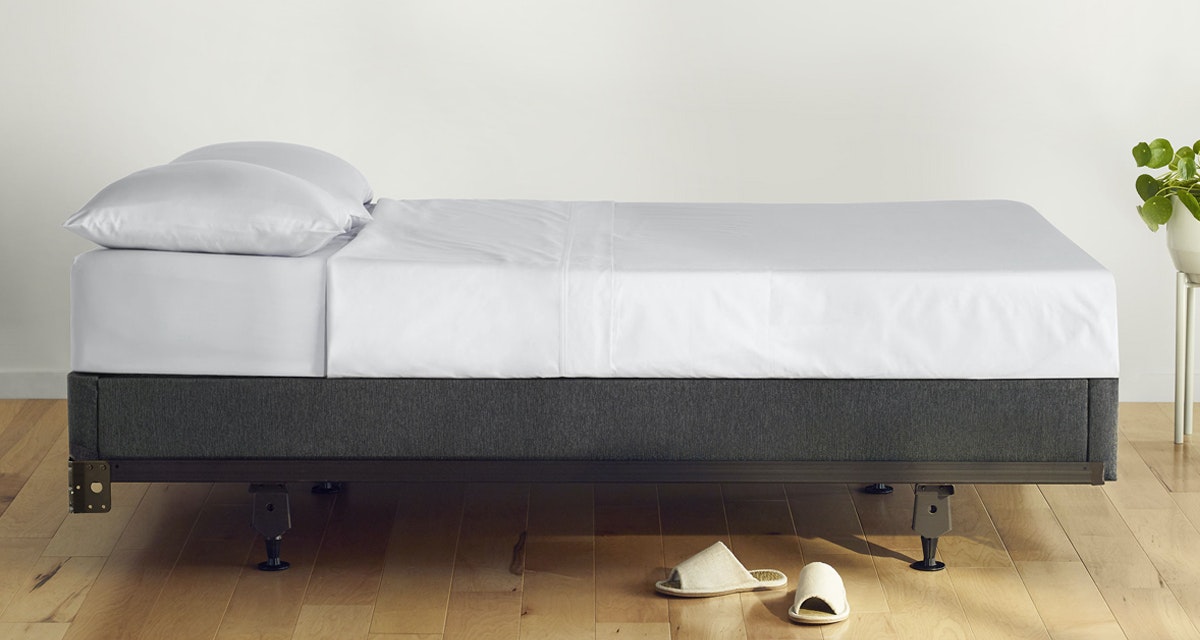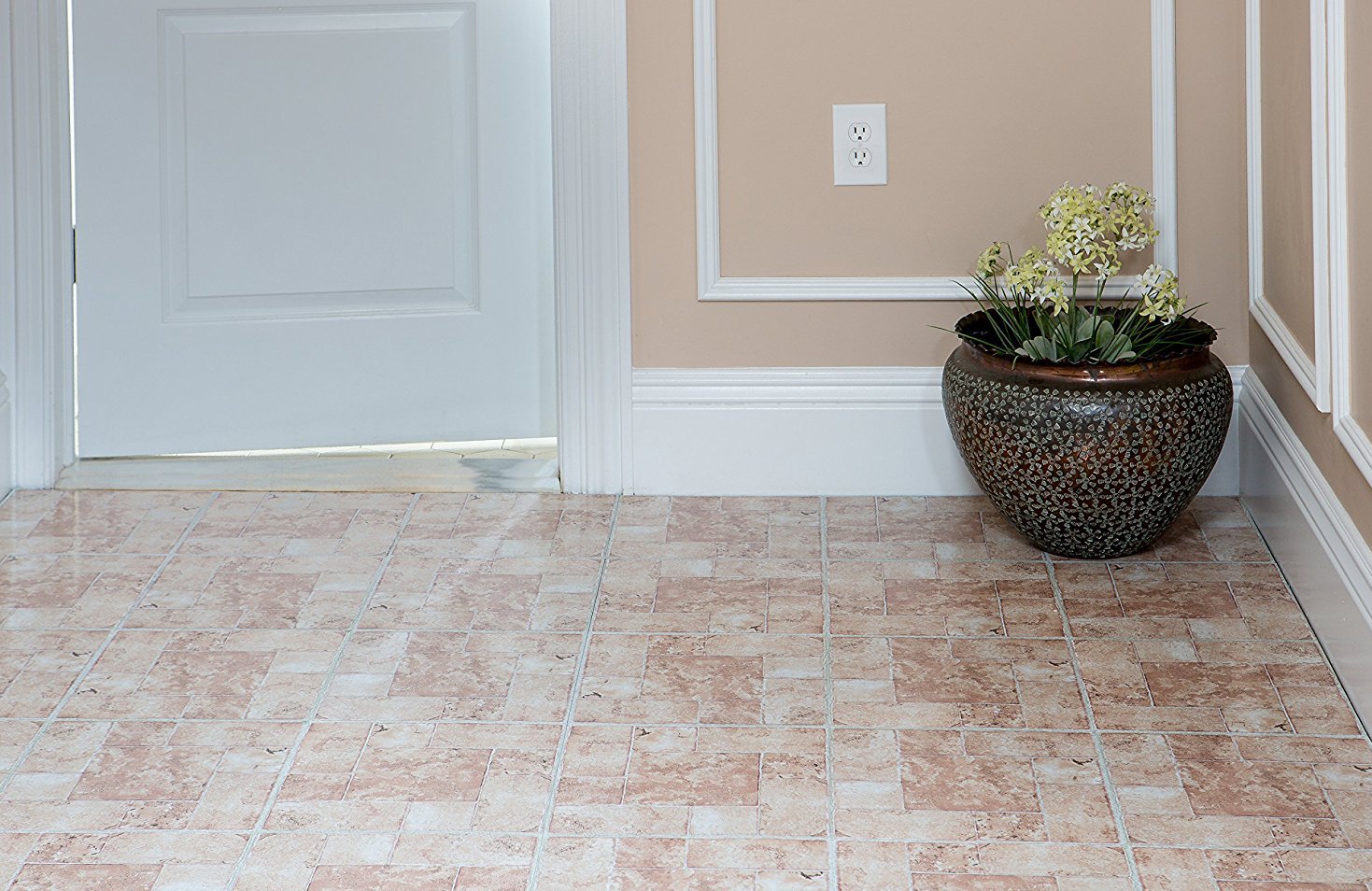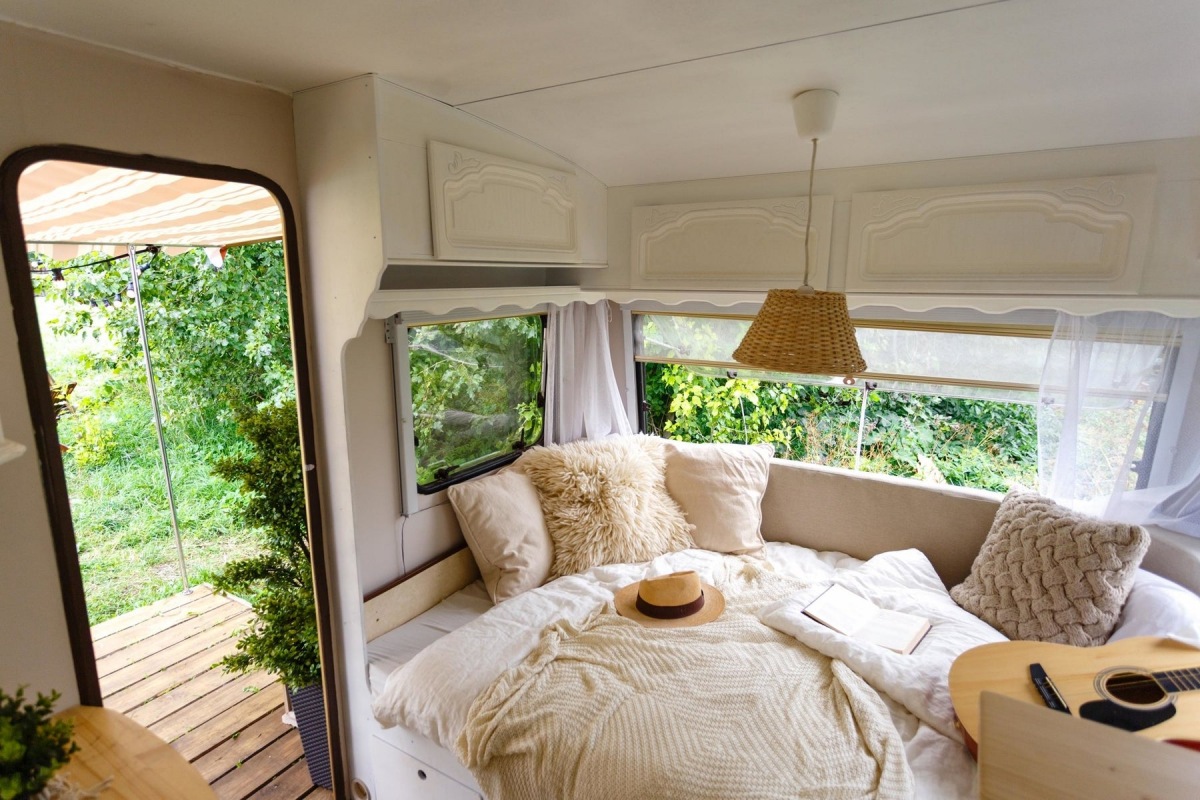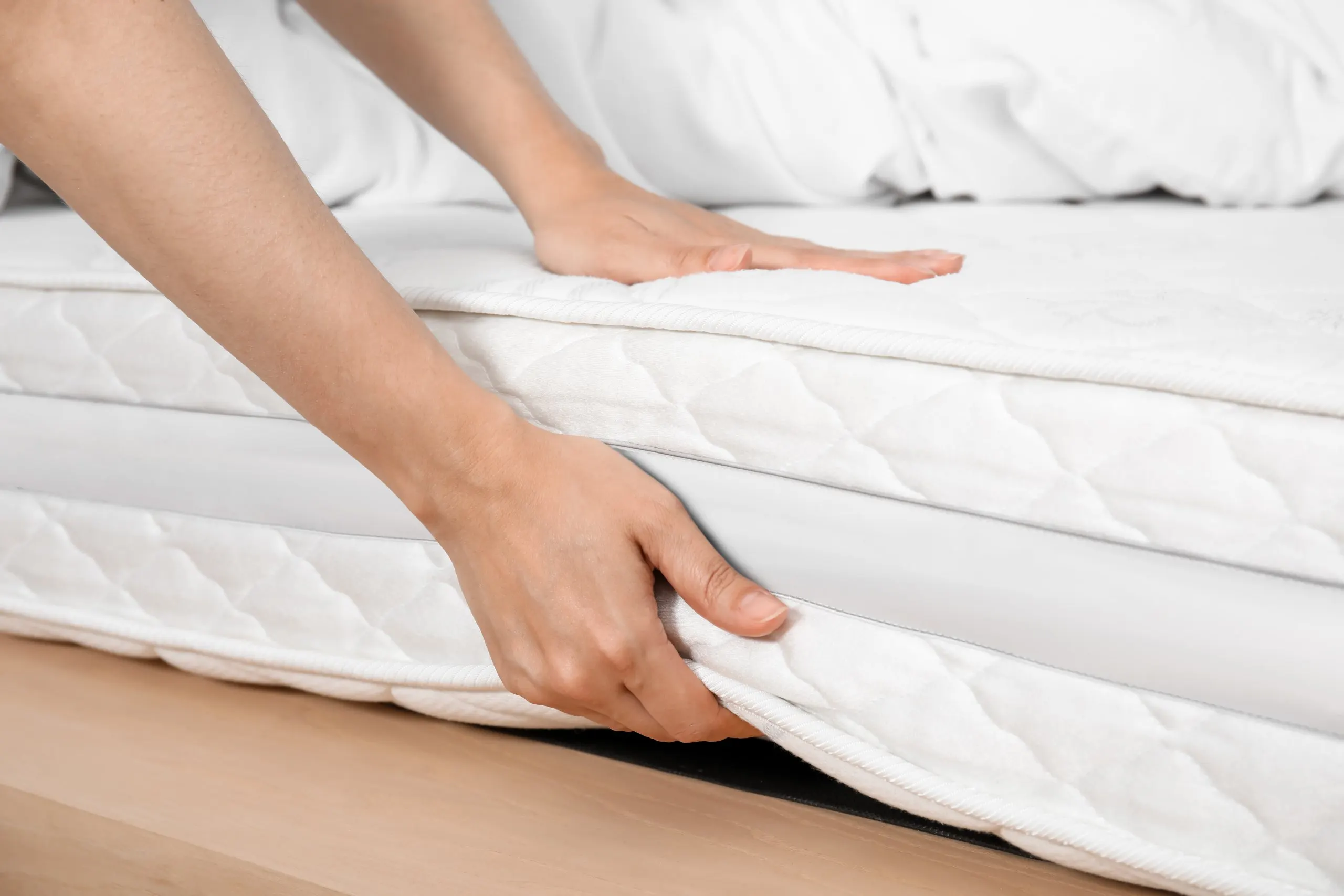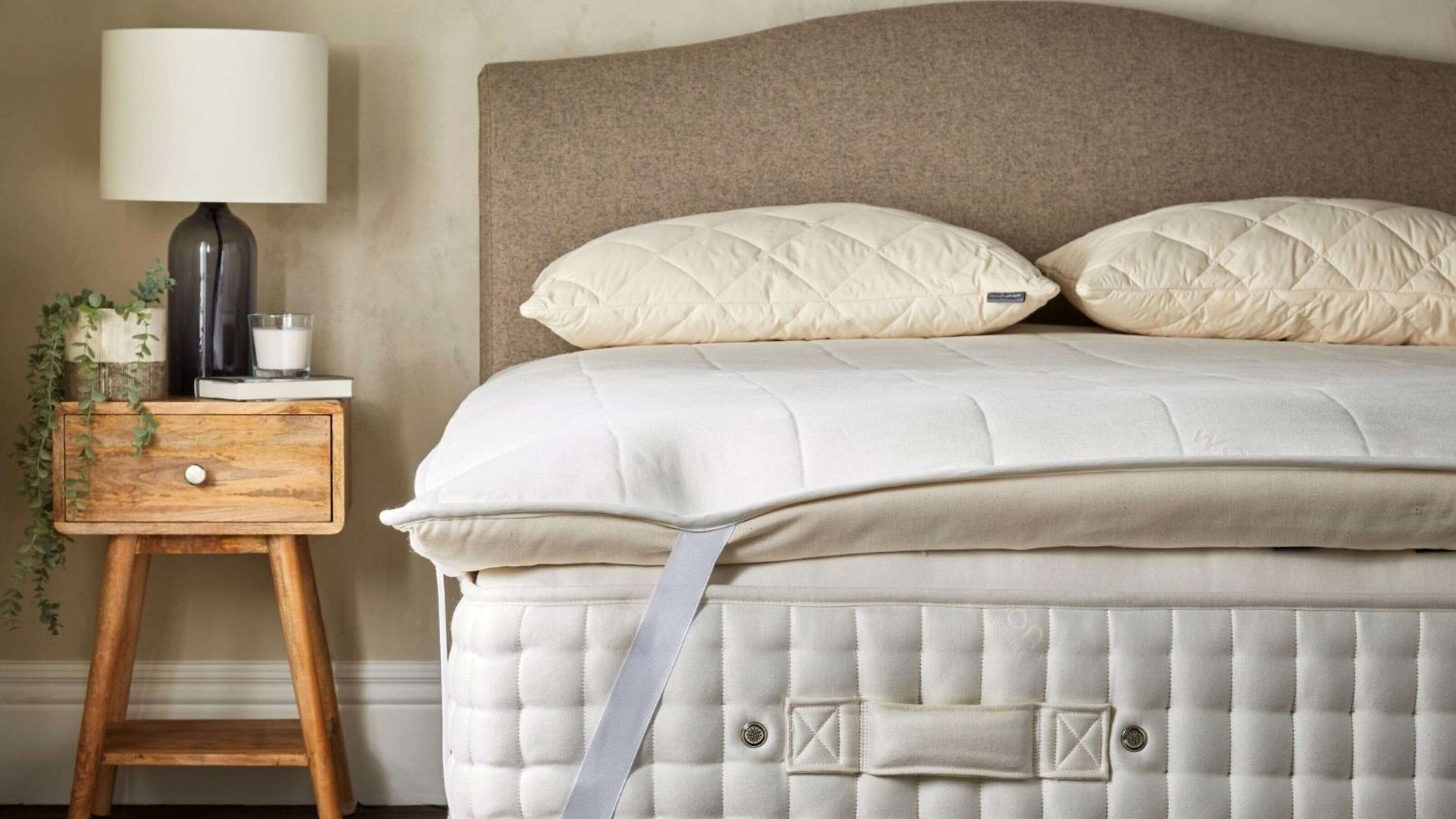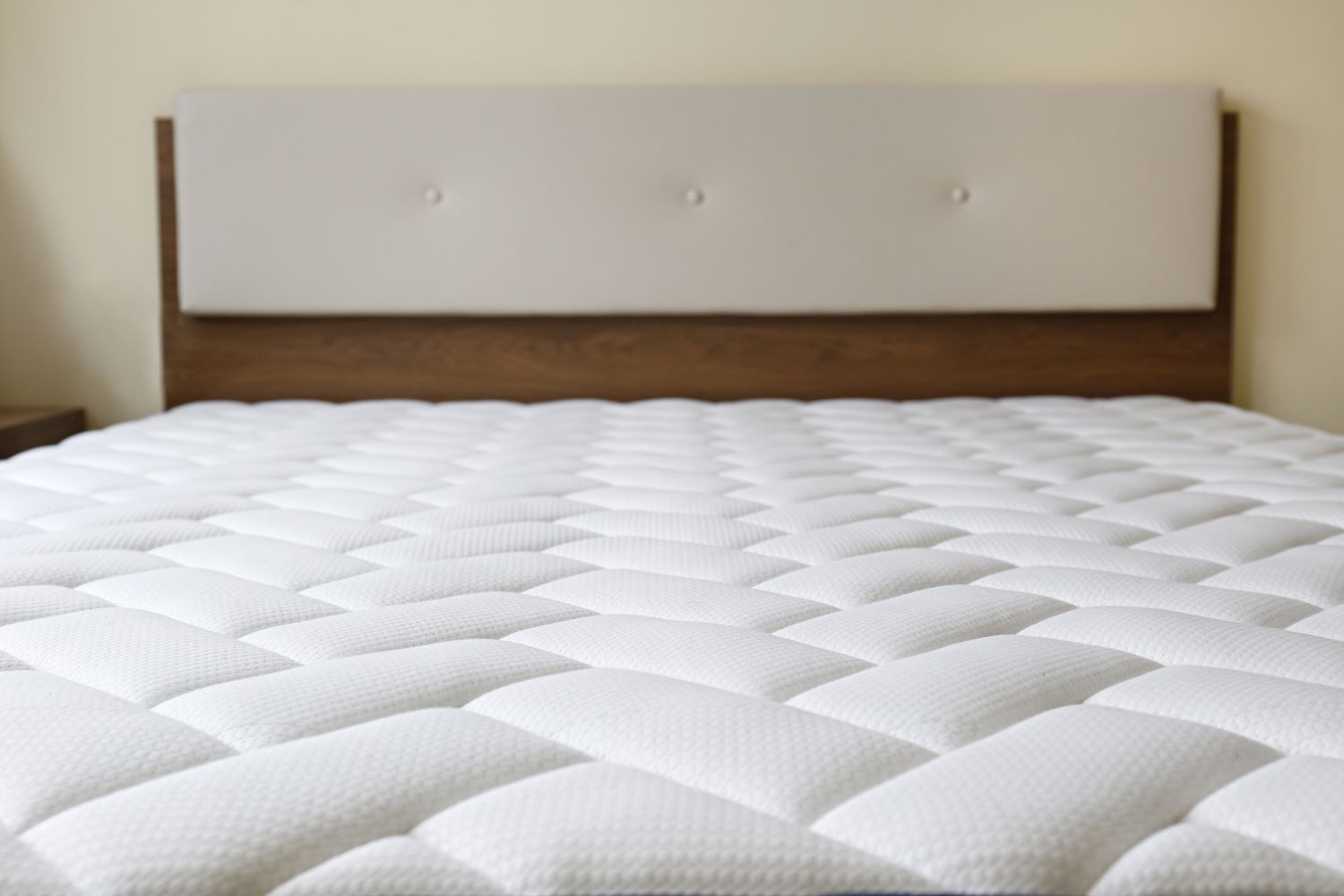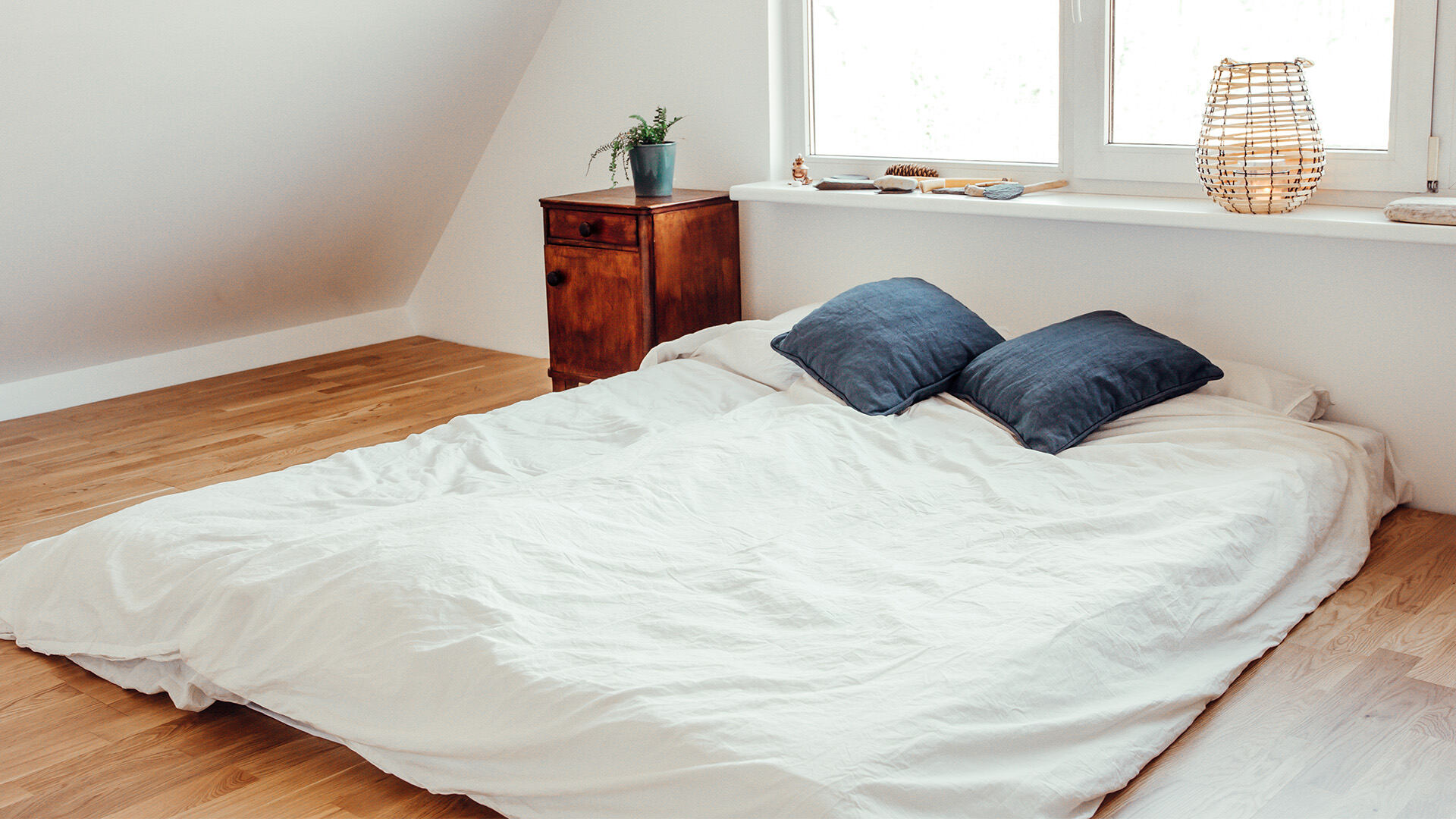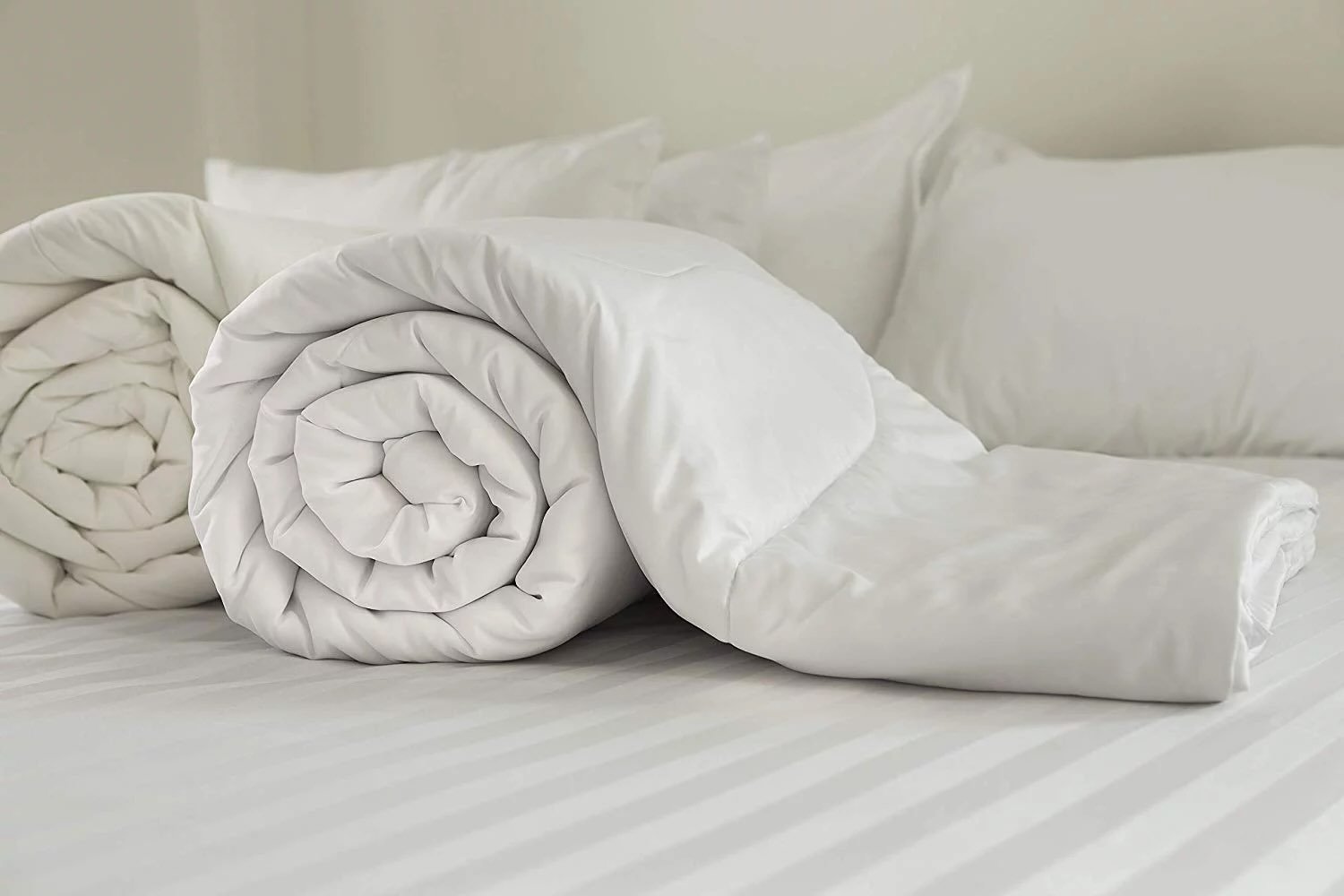Home>Furniture>Bedroom Furniture>What Goes Under A Mattress
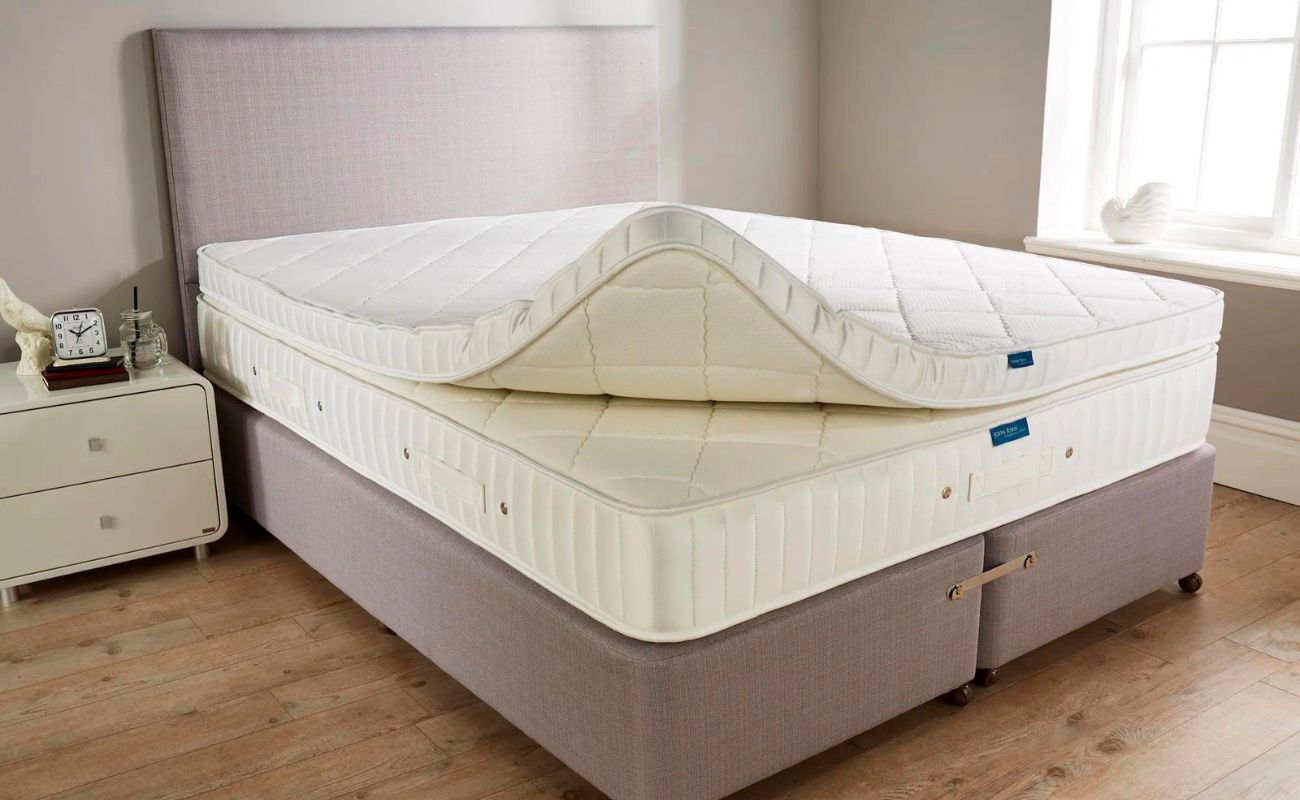

Bedroom Furniture
What Goes Under A Mattress
Modified: February 23, 2024
Discover the best options for what goes under a mattress with our comprehensive guide. Enhance your bedroom furniture with these practical and stylish choices.
(Many of the links in this article redirect to a specific reviewed product. Your purchase of these products through affiliate links helps to generate commission for Storables.com, at no extra cost. Learn more)
Introduction
When it comes to getting a good night’s sleep, the right mattress support is essential. While the mattress itself plays a crucial role in your comfort and spinal alignment, what often goes unnoticed is the foundation that supports it. Without proper support, even the most luxurious mattress can lose its effectiveness and leave you tossing and turning all night.
In this article, we will explore the various options for mattress support systems and discuss their benefits and drawbacks. We’ll look at traditional support systems like box spring foundations and platform bed frames, as well as alternative options like slatted support systems and adjustable beds. Additionally, we’ll delve into alternative mattress support options like solid base foundations, mattress toppers and pads, and even DIY solutions. By the end, you’ll have a comprehensive understanding of what goes under a mattress and how to choose the best support system for your needs.
Without further ado, let’s dive into the world of mattress support systems and uncover the secrets to a restful and rejuvenating sleep experience.
Key Takeaways:
- Choose the Right Support System
Selecting the ideal mattress support system is crucial for spinal alignment, mattress longevity, and overall comfort. Consider factors like compatibility, airflow, and personal preferences to make an informed decision. - Beyond Traditional Options
Explore alternative mattress support solutions such as slatted systems, adjustable beds, solid base foundations, mattress toppers, and DIY options. These alternatives offer flexibility, customization, and cost-effective ways to enhance mattress stability and comfort.
Read more: What Goes Under Fake Grass
Importance of Proper Mattress Support
Proper mattress support is crucial for several reasons. Firstly, it ensures that your body is properly aligned while you sleep. When your spine is in a neutral position, it promotes better blood circulation, reduces pressure points, and minimizes the risk of developing aches and pains. A sagging or uneven mattress support system can throw your spine out of alignment, leading to discomfort and even long-term musculoskeletal issues.
Secondly, a good mattress support system helps prolong the lifespan of your mattress. Without adequate support, the weight of your body is concentrated in certain areas, causing the mattress to wear out unevenly. This can lead to sagging and indentations, significantly reducing the durability and longevity of your mattress.
Furthermore, proper mattress support can enhance the comfort of your sleep surface. It improves the overall stability and firmness of the mattress, ensuring that it maintains its shape and provides consistent support. A sturdy foundation not only prevents the mattress from sinking or shifting, but it also minimizes motion transfer, allowing you and your partner to enjoy undisturbed sleep.
Lastly, investing in a quality mattress support system can positively impact your respiratory health. An old or worn-out foundation can accumulate dust, mold, and allergens over time, which may exacerbate allergies or respiratory conditions. Upgrading to a new and clean mattress support system can help create a healthier sleeping environment, free of potential irritants.
By understanding the importance of proper mattress support, you can make an informed decision when choosing the right foundation for your mattress. Now, let’s explore the traditional mattress support systems available and their unique features.
Traditional Mattress Support Systems
When it comes to traditional mattress support systems, two primary options come to mind: box spring foundations and platform bed frames.
Box Spring Foundation
A box spring foundation is a popular choice for many mattress owners. It consists of a sturdy wooden frame with a combination of springs and a fabric cover. The springs in the box spring act as a shock absorber, providing additional support and cushioning to the mattress. This type of foundation is typically used with innerspring mattresses.
Box springs are designed to work in conjunction with the mattress to evenly distribute your body weight and provide a stable surface. They help maintain the integrity of the mattress and prevent it from sagging over time. Additionally, box spring foundations can add height to your bed, making it easier to get in and out.
However, it’s worth noting that box springs may not be suitable for all mattress types. They are generally recommended for innerspring and hybrid mattresses, as the springs in the box spring can interfere with the support system of foam or latex mattresses, causing them to feel less supportive.
Platform Bed Frame
A platform bed frame is another popular choice for mattress support. It is a low-profile, solid base that eliminates the need for a box spring. Platform bed frames are typically made of wood or metal and come in various designs, including slatted or solid bases.
The main benefit of a platform bed frame is its versatility. It can accommodate different types of mattresses, including foam, latex, and hybrid mattresses. Additionally, platform beds offer excellent support and stability due to their solid construction. They evenly distribute weight across the mattress, preventing sagging and preserving the mattress’s lifespan.
Platform bed frames also provide ample airflow, which can help regulate the temperature of your mattress and prevent heat buildup. This is particularly beneficial for memory foam mattresses, as they tend to retain more heat compared to other mattress types.
Furthermore, platform bed frames are known for their aesthetic appeal and the extra storage space they can provide. Some platform bed frames come with built-in drawers or shelves, allowing you to maximize your bedroom’s storage capacity.
Now that we’ve explored the traditional support systems, let’s move on to discuss another popular option – slatted support systems.
Read more: What Goes Under Vinyl Siding
Box Spring Foundation
A box spring foundation is a classic and widely used option for mattress support. It consists of a wooden frame with a grid of metal springs or sturdy wooden slats. The box spring is typically encased in a fabric cover.
The primary function of a box spring foundation is to provide added support and shock absorption for your mattress. The springs or slats in the box spring help distribute your body weight evenly, reducing pressure points and ensuring a more comfortable sleep surface.
In addition to support, box spring foundations offer other benefits. One notable advantage is their ability to increase the overall height of your bed. This can be particularly beneficial for individuals with mobility issues or those who simply prefer a higher bed height.
Box springs are commonly used with innerspring mattresses. The combination of a supportive foundation and the internal springs of the mattress work together to provide optimal comfort and stability. However, it’s worth noting that box springs may not be the best option for all mattress types.
For foam or latex mattresses, box springs may not offer adequate support. These types of mattresses have their own support systems that are designed to work effectively on a solid surface. The springs or slats of a box spring can interfere with the specialized support system of foam or latex mattresses, potentially leading to less support and comfort.
When opting for a box spring foundation, it’s important to ensure that it is compatible with your specific mattress type. If you’re uncertain, consult the mattress manufacturer or a knowledgeable salesperson to determine the best support system for your mattress.
It’s also worth noting that box springs can add some degree of bounce or movement to the mattress. While this can be desirable for some individuals, those who prefer a firmer and more stable sleep surface may find box springs less suitable.
In summary, box spring foundations are a popular choice for mattress support, especially when paired with innerspring mattresses. They provide additional support, shock absorption, and increased bed height. However, it’s important to consider the compatibility with your mattress type and personal preferences when deciding on a box spring foundation.
Platform Bed Frame
A platform bed frame is a versatile and modern option for mattress support. Unlike a traditional bed frame, a platform bed frame eliminates the need for a box spring by providing a solid base for your mattress. It is a low-profile bed frame that typically consists of a sturdy platform or slatted surface.
One of the main advantages of a platform bed frame is its compatibility with various mattress types, including foam, latex, hybrid, and even traditional innerspring mattresses. The solid surface of the platform bed frame provides excellent support and stability, ensuring that your mattress maintains its shape and remains comfortable over time.
The solid platform or slatted surface of a platform bed frame evenly distributes your body weight across the mattress, preventing sagging and unnecessary strain on specific areas. This can help prolong the lifespan of your mattress by minimizing wear and tear.
Another benefit of platform bed frames is their aesthetic appeal and versatility in design. They come in a wide range of styles and materials, allowing you to choose a platform bed frame that matches your desired bedroom aesthetic. Whether you prefer a minimalist, modern look or a more traditional design, there is a platform bed frame that suits your taste.
In addition to aesthetics, platform bed frames also offer practical advantages. They often come with under-bed storage options, such as drawers or open space, providing valuable extra storage in smaller bedrooms. This can be especially beneficial for those living in apartments or homes with limited storage space.
Furthermore, platform bed frames promote good airflow for your mattress. The slatted design allows for air circulation, which helps regulate the temperature of the mattress. This is particularly advantageous for individuals who sleep hot or have mattresses that tend to retain heat, such as memory foam mattresses.
When choosing a platform bed frame, it’s essential to consider the spacing between the slats. Ideally, the slats should be no more than 3 inches apart to adequately support the mattress and prevent any sagging or potential damage.
In summary, a platform bed frame is a versatile, stylish, and practical option for mattress support. It is compatible with various mattress types, offers excellent support and stability, and provides additional storage space. Consider a platform bed frame to enhance the aesthetics and functionality of your bedroom while enjoying optimal mattress support.
Slatted Support Systems
Slatted support systems are an alternative option for mattress support and offer a unique combination of flexibility and durability. These systems consist of a series of wooden or metal slats that form a supportive base for your mattress.
One of the key advantages of slatted support systems is their ability to promote proper airflow. The gaps between the slats allow for increased ventilation, which helps regulate the temperature of your mattress. This can be particularly beneficial for individuals who tend to sleep hot or have mattresses that retain heat.
Slatted support systems also offer excellent weight distribution and support. The slats work together to evenly distribute your body weight across the entire mattress surface, preventing sagging and ensuring optimal support. This can help prolong the lifespan of your mattress by minimizing the wear and tear caused by concentrated pressure points.
When choosing a slatted support system, there are a few factors to consider. The spacing between the slats is crucial to ensure proper support. Ideally, the slats should be no more than 3 inches apart to prevent your mattress from sagging or shifting. You should also check the thickness and quality of the slats to ensure they can withstand the weight of the mattress and provide stable support.
It’s worth noting that certain mattress types may have specific requirements for slatted support systems. Memory foam mattresses, for example, may require a more solid base with closer slat spacing to maintain the mattress’s structural integrity. Always refer to the manufacturer’s guidelines or consult with a sleep specialist to ensure compatibility between your mattress and the slatted support system.
Slatted support systems come in various designs and materials. Some systems have adjustable slats, allowing you to customize the firmness and support level of your sleep surface. Others may incorporate additional features such as lumbar support or reinforced center support for added stability.
Overall, slatted support systems offer a practical and adaptable solution for mattress support. They provide proper airflow, even weight distribution, and can be customized to suit individual preferences. Consider a slatted support system if you prefer a flexible and breathable support option for your mattress.
Adjustable Beds
Adjustable beds are a popular and innovative option for mattress support, offering a customizable sleep experience to meet individual preferences and comfort needs. These beds feature an adjustable base that allows you to change the angle of the head and foot of the bed.
One of the main benefits of adjustable beds is their ability to provide personalized support and alleviate common sleep issues. By adjusting the position of the bed, you can find the optimal angle for reading, watching TV, working on your laptop, or even sleeping with specific health conditions such as acid reflux or snoring. This versatility makes adjustable beds especially beneficial for individuals with chronic pain, respiratory problems, or mobility challenges.
These beds typically come with a remote control that allows you to adjust the bed’s position effortlessly. You can raise or lower the head and foot sections independently or choose pre-set positions for added convenience.
When it comes to mattress compatibility, most adjustable beds are designed to accommodate various mattress types, including memory foam, latex, and hybrid mattresses. However, it’s crucial to ensure that your mattress is compatible with an adjustable base. Some mattresses may not be flexible enough to bend with the adjustable bed frame, which could affect their performance and longevity.
Adjustable beds often include additional features for enhanced comfort. Some models offer massage functions that can help relieve muscle tension and promote relaxation. Others may have built-in USB ports, under-bed lighting, or even smartphone compatibility for added convenience.
While adjustable beds can offer a wide range of benefits, they do come with a higher price tag compared to traditional bed frames. However, many people find the investment worthwhile considering the potential improvement in sleep quality and overall comfort.
When choosing an adjustable bed, it’s essential to consider the quality and durability of the base, as well as the warranty offered by the manufacturer. Look for models that have sturdy construction, smooth and quiet motor operation, and a reliable warranty to ensure long-term satisfaction with your purchase.
In summary, adjustable beds provide personalized support and a customizable sleep experience. They are particularly beneficial for individuals with specific health conditions or those who enjoy lounging or working in bed. If you value versatility and the ability to tailor your sleep surface to your preferences, consider investing in an adjustable bed.
Read more: What Goes Under Roof Shingles
Alternative Mattress Support Options
Aside from traditional support systems like box springs and platform bed frames, there are several alternative options available that may better suit your needs and preferences. Let’s explore some of these alternative mattress support options:
Solid Base Foundations
A solid base foundation is a simple and sturdy alternative to box springs or platform bed frames. It consists of a solid surface, usually made of wood or metal, that provides consistent support for your mattress. Solid base foundations are compatible with various mattress types and help prevent sagging and premature wear.
These foundations are especially beneficial for foam or latex mattresses, as they provide a firm and stable surface for optimal support. They also work well with adjustable beds, ensuring that your mattress remains properly supported, even when adjusting the bed’s position.
Mattress Toppers and Pads
Another alternative option for mattress support is the use of mattress toppers or pads. These are thick, cushioned layers that sit on top of your mattress to provide extra comfort and support. Mattress toppers can be made from materials like memory foam, latex, or even down feathers.
The addition of a mattress topper can help improve the overall feel and support of your sleep surface. It can add a plush layer for extra softness or provide additional pressure relief, especially if your mattress is too firm for your liking. However, keep in mind that a mattress topper is not a replacement for proper mattress support. It is best used in conjunction with a suitable foundation or base.
DIY Solutions for Mattress Support
If you’re handy and looking for a more budget-friendly option, there are DIY solutions for mattress support that you can explore. One example is the use of plywood boards placed between your mattress and the bed frame or foundation. This can help create a solid and even surface for your mattress, reducing sagging and enhancing support.
However, when implementing a DIY solution, it’s important to exercise caution and ensure the stability and safety of your mattress support system. Use high-quality materials and seek guidance if you’re unsure about the proper implementation.
Ultimately, the alternative mattress support option you choose will depend on your specific needs, budget, and personal preferences. It is recommended to assess the compatibility with your mattress type, consider the level of support desired, and explore the options available to find the best fit for you.
Read more: What Goes Over A Mattress
Solid Base Foundations
Solid base foundations are an excellent alternative to traditional box springs or platform bed frames for mattress support. As the name suggests, these foundations offer a solid surface for your mattress to rest on, providing consistent and even support.
One of the primary advantages of solid base foundations is their compatibility with various mattress types. Whether you have a foam, latex, innerspring, or hybrid mattress, a solid base foundation can provide the necessary support to maintain the integrity of the mattress and enhance your overall sleep experience.
Solid base foundations offer several benefits. First and foremost, they minimize sagging and prevent premature wear of your mattress. By providing a firm and stable surface, they help distribute your body weight evenly, reducing the risk of developing uncomfortable pressure points over time.
In addition, solid base foundations can improve the overall feel and support of your mattress. They create a flat and sturdy surface that allows the mattress to conform to your body’s contours and provide optimal spinal alignment. This can lead to better sleep quality and alleviate discomfort or pain associated with improper support.
If you have an adjustable bed frame, solid base foundations are an ideal choice. They work seamlessly with adjustable frames, ensuring that your mattress remains properly supported at all angles and positions.
When selecting a solid base foundation, consider the construction and materials used. Look for foundations made from high-quality, durable materials such as solid wood or metal. Ensure that the foundation is adequately reinforced to handle the weight of your mattress and body.
It’s worth mentioning that solid base foundations come in different heights. If bed height is a consideration for you, choose a foundation height that aligns with your preferences and ease of getting in and out of bed. Some foundations even offer adjustable heights, allowing you to customize the bed’s elevation to meet your specific needs.
Overall, solid base foundations are a reliable and versatile option for mattress support. They offer compatibility with various mattress types, minimize sagging, and promote proper spinal alignment. Consider a solid base foundation to enhance the longevity and comfort of your mattress.
Mattress Toppers and Pads
Mattress toppers and pads are a popular alternative for enhancing mattress support and comfort. These additional layers, placed on top of your mattress, can provide extra cushioning and support to improve your overall sleep experience.
Mattress toppers and pads come in various materials, including memory foam, latex, down feathers, or even polyester fiberfill. Each material offers different benefits, so it’s important to choose one that aligns with your personal preferences.
One of the key advantages of mattress toppers is their ability to soften a firm mattress or add an extra layer of comfort to an older mattress that may have lost its initial plushness. If you find your mattress too firm or lacking pressure relief, a mattress topper can help provide the desired level of cushioning and cradle your body contours.
On the other hand, if your mattress lacks adequate support, a mattress pad made of memory foam or latex can offer additional support and improve spinal alignment. These materials contour to your body shape and provide support where it’s needed most, helping to reduce pressure points and alleviate discomfort.
Additionally, mattress toppers and pads can be a cost-effective solution compared to investing in a new mattress. If your current mattress is still in good condition but needs a little extra comfort or support, a topper or pad can rejuvenate the sleep surface without breaking the bank.
It’s worth noting that mattress toppers and pads are not a substitute for proper mattress support. They are designed to enhance comfort and provide additional cushioning, but they rely on a supportive foundation or base to maintain the mattress’s structural integrity. Therefore, it’s important to ensure that your underlying mattress support system is suitable and in good condition.
When choosing a mattress topper or pad, consider factors such as thickness, density, and breathability. A thicker topper generally provides more contouring and cushioning, while density determines the level of support and durability. Breathability is crucial to prevent heat build-up, especially if you tend to sleep hot.
Lastly, it’s important to regularly clean and maintain your mattress topper or pad according to the manufacturer’s guidelines. This will help ensure optimal hygiene and prolong the lifespan of the topper or pad.
In summary, mattress toppers and pads offer a versatile and cost-effective alternative for enhancing mattress support and comfort. Whether you want to soften a firm mattress or add support to an older one, these additional layers can provide the desired level of cushioning and support for a better sleep experience.
Consider using a mattress foundation or box spring to provide support and extend the lifespan of your mattress. This can also help prevent sagging and improve overall comfort.
DIY Solutions for Mattress Support
If you’re looking for a budget-friendly option or want to get creative, there are DIY solutions available to enhance mattress support. These solutions can provide a solid foundation or improve the stability of your existing support system. Here are a few DIY ideas to consider:
Plywood Boards
One simple and effective DIY solution is to use plywood boards placed between your mattress and the bed frame or foundation. Cut the plywood into the same size as your mattress and position it on top of the existing support system. This will create a solid and even surface for your mattress, minimizing sagging and improving overall support.
Ensure that the plywood boards are of adequate thickness and quality to withstand the weight of your mattress and body. For larger mattresses, it may be necessary to use multiple plywood boards for complete coverage.
Read more: What Goes Under Synthetic Grass
Reinforced Slats
If your current bed frame has slats that are too thin or spaced too far apart, reinforcing them with additional slats can provide better support. Measure the spacing between the existing slats and cut additional slats to fit. Place the additional slats in between the existing slats to reduce the gap and provide a more solid base for your mattress.
Opt for sturdy and durable materials, such as hardwood or high-quality plywood, for the additional slats. Consider adding extra support in the center of the bed frame for added stability and to prevent sagging.
Old Mattress Support
If you have an old or unused mattress lying around, you can repurpose it to improve your current mattress support. Place the old mattress underneath your existing mattress as an additional layer of support. This can help fill in any gaps or provide extra cushioning, especially if your current support system is lacking.
Ensure that the old mattress is clean and in good condition, free from any sagging or damage that could affect your sleep comfort. You may also consider flipping the old mattress upside down to utilize the more supportive side.
However, keep in mind that while these DIY solutions can offer temporary improvements, they may not provide the same level of support or longevity as purpose-built mattress support systems. It’s recommended to regularly assess the effectiveness of your DIY solution and invest in a proper mattress support system when feasible.
In summary, DIY solutions for mattress support can be a cost-effective option to enhance the stability and comfort of your mattress. Whether using plywood boards, reinforcing slats, or repurposing old mattresses, these DIY solutions can provide temporary relief until you are able to invest in a more suitable and long-term support system.
Conclusion
Choosing the right mattress support system is essential for ensuring a restful and comfortable sleep experience. Traditional options like box spring foundations and platform bed frames offer stability and compatibility with various mattress types. However, alternative options such as slatted support systems, adjustable beds, solid base foundations, mattress toppers, and DIY solutions provide additional flexibility and customization.
The importance of proper mattress support cannot be overstated. It promotes spinal alignment, extends the lifespan of your mattress, enhances comfort, and contributes to better overall sleep quality. By considering factors such as mattress type compatibility, airflow, weight distribution, and personal preferences, you can make an informed decision about the most suitable support system for your needs.
Remember, mattress support doesn’t end with the foundation alone. It’s important to regularly assess and maintain your support system to ensure its effectiveness and longevity. Keep in mind that the support system works in conjunction with your mattress to create the optimal sleep surface.
Whether you opt for a traditional box spring foundation, a modern platform bed frame, a slatted support system, an adjustable bed, a solid base foundation, or a mattress topper, the key is to choose a system that aligns with your comfort preferences and promotes proper sleep posture.
While price and convenience are important factors to consider, prioritize your comfort and the long-term benefits that a proper mattress support system can provide. Investing in quality support will ultimately enhance your sleep quality, promote spinal health, and contribute to your overall well-being.
In summary, take the time to evaluate your options, research different support systems, and choose the one that aligns with your specific needs and preferences. By investing in proper mattress support, you’ll create the ideal sleep environment for restful nights and rejuvenated mornings.
Frequently Asked Questions about What Goes Under A Mattress
Was this page helpful?
At Storables.com, we guarantee accurate and reliable information. Our content, validated by Expert Board Contributors, is crafted following stringent Editorial Policies. We're committed to providing you with well-researched, expert-backed insights for all your informational needs.
